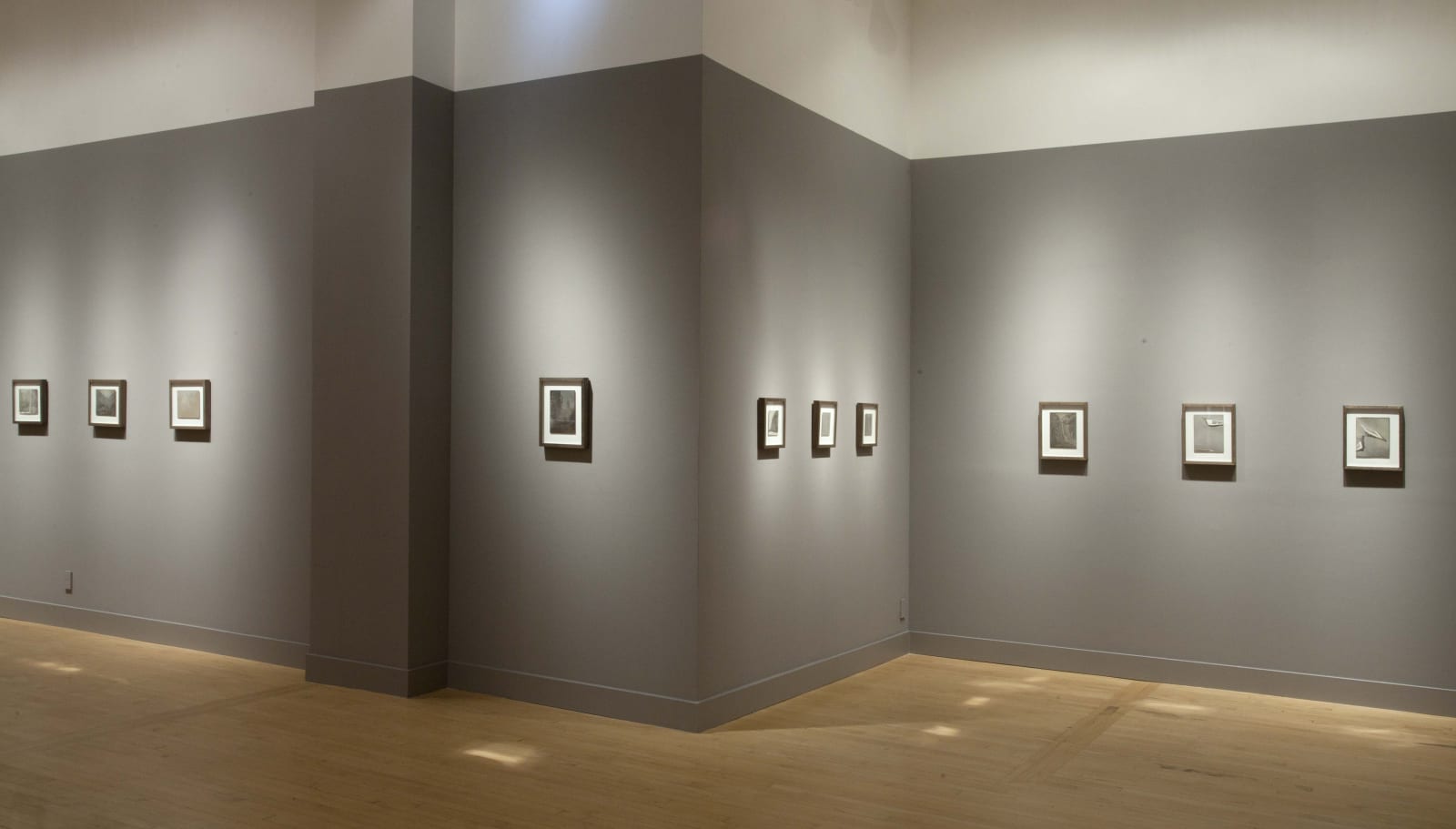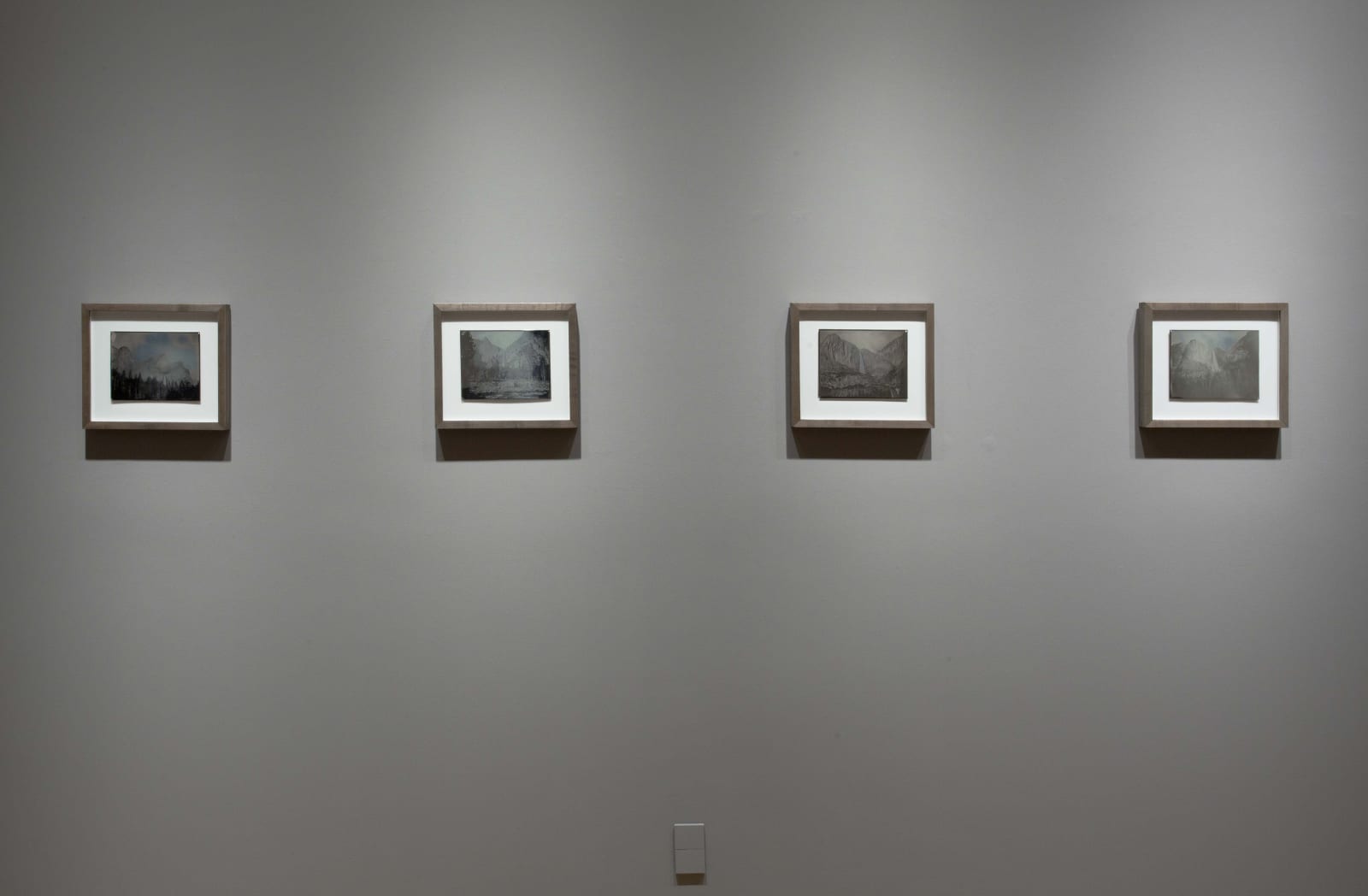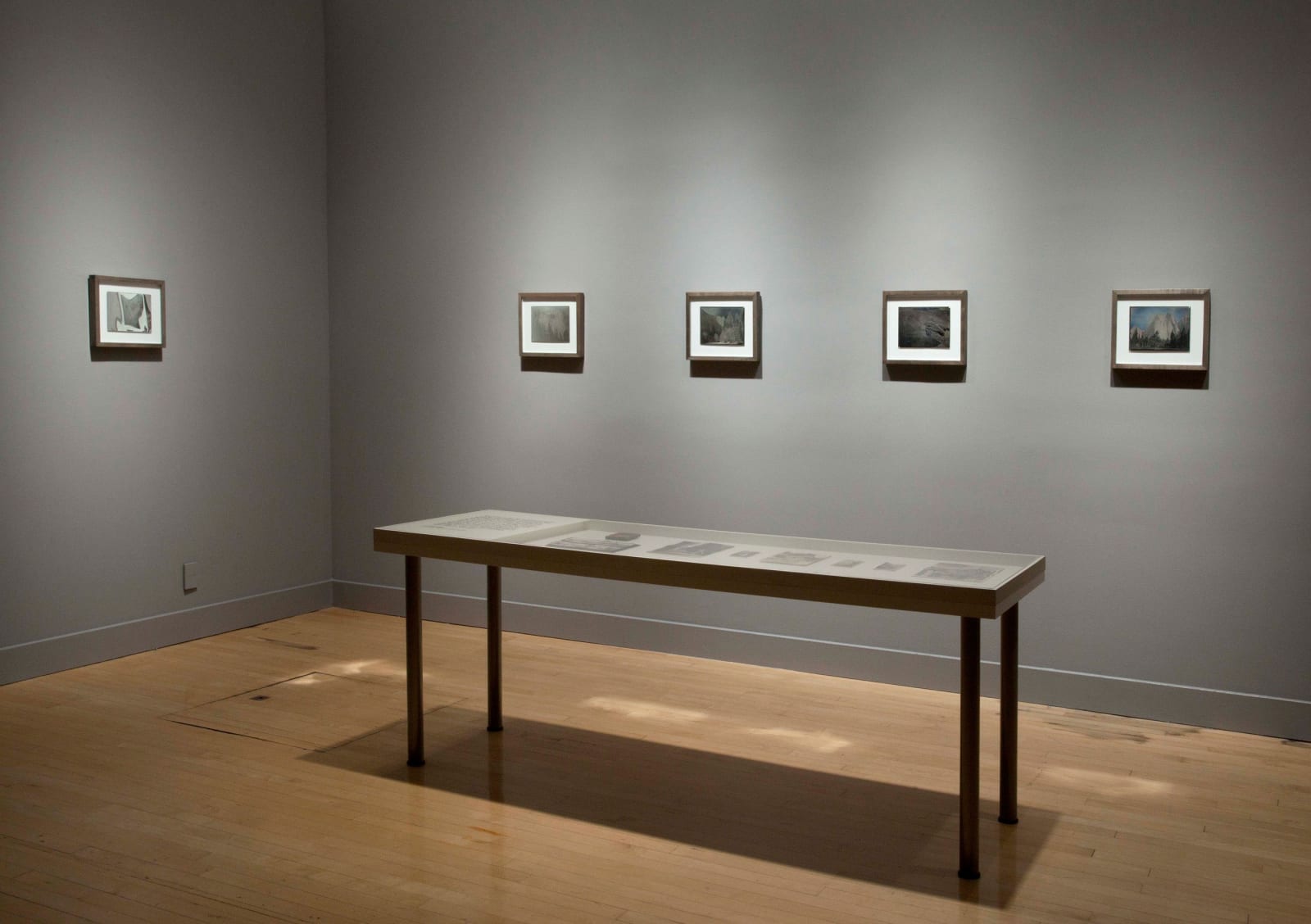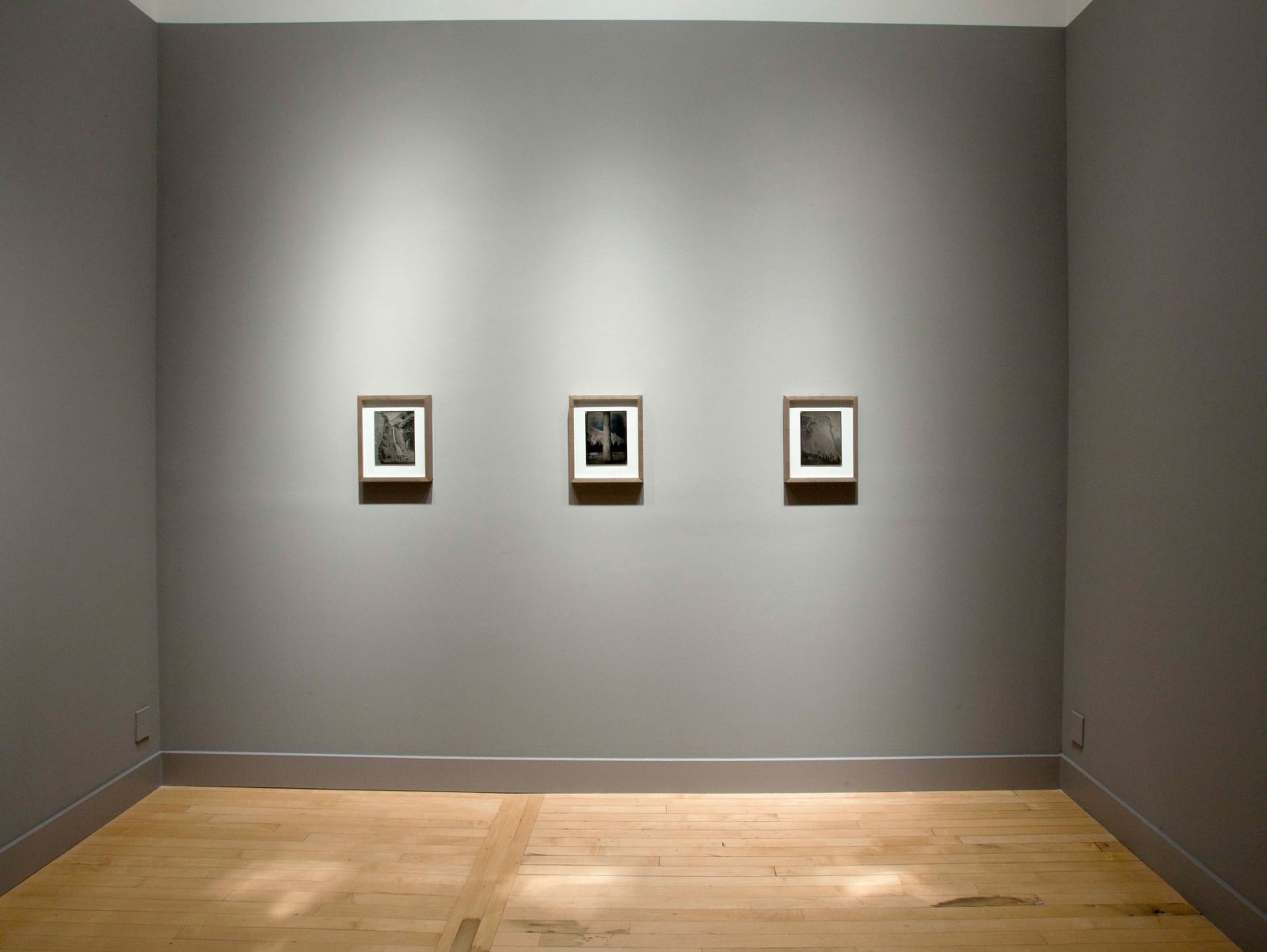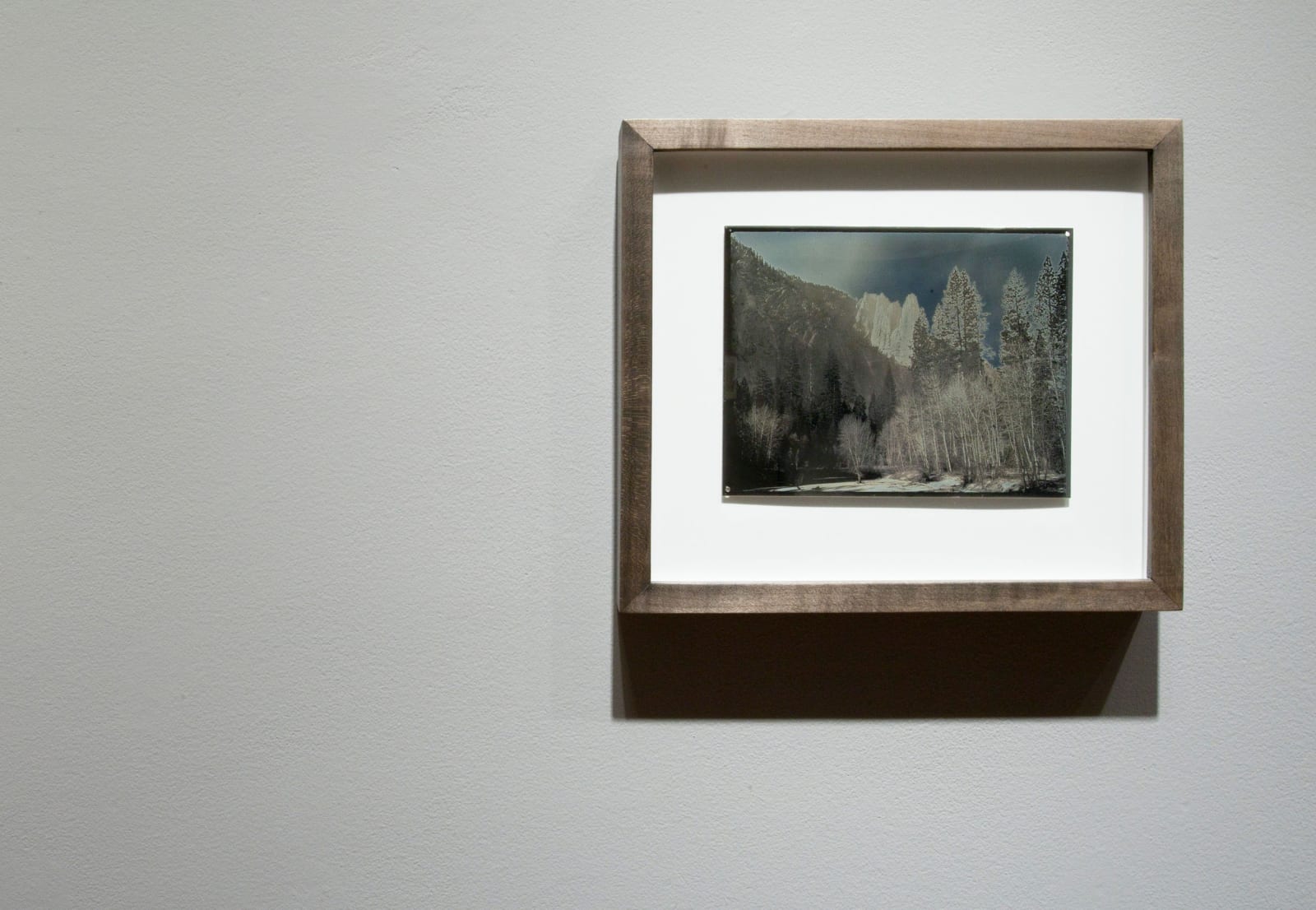Binh Danh: Yosemite
I am interested in how we as a nation of immigrants could 'reflect' on these daguerreotypes and see our faces in this landscape.
Known for his innovative approach to alternative photographic processes, Binh Danh presents a new series of daguerreotypes in his fourth exhibition at Haines Gallery. The works on view in Yosemite are the result of his three-year investigation into perfecting the creation of "in-camera" daguerreotypes, one-of-a-kind works that cannot be duplicated and are the earliest form of photography. While Danh experimented with variations on the daguerreotype process in earlier bodies of work, it was not until 2009 that he embarked upon the painstaking process of sensitizing, exposing and developing silver plates in the landscape, striving to achieve the quality he so admires in nineteenth century examples of this medium.
Working with large format cameras modified to accept silver plates rather than film negatives, Danh's command of this complex process is revealed in his attention to detail, diligently preparing and treating each plate's surface to produce works that accentuate the unique lighting conditions of the scene. He captures stunningly intricate, yet ethereal images of Yosemite's sweeping vistas, some the result of exposures as long as two minutes. Though raised in the Bay Area - and fascinated as a child by Ansel Adams' seminal photographs of this national park - Danh had not visited Yosemite until this project, in which he documents his lived experience of this previously imagined landscape.
Danh's daguerreotypes extend and reconsider the pursuit of pioneering nineteenth century landscape photographer, Carleton Watkins, best known for his series of mammoth-plate photographs made in the Yosemite Valley in the mid-to-late 1800s. He revisits many of the same sites as Watkins, including Yosemite Falls, El Capitan and Horsetail Falls, which is only viewable two to three months each year. Though investigating the same terrain as this predecessor, Danh imbues this scenery with his distinctly personal perspective - namely, an attempt to negotiate his connection as a Vietnamese American with the landscape and history of the United States. He explains, "I am interested in how we as a nation of immigrants could 'reflect' on these daguerreotypes and see our faces in this landscape." The highly reflective surfaces of Danh's daguerreotypes literally mirror their surroundings, embracing viewers within the idyllic environs of this national landmark.


